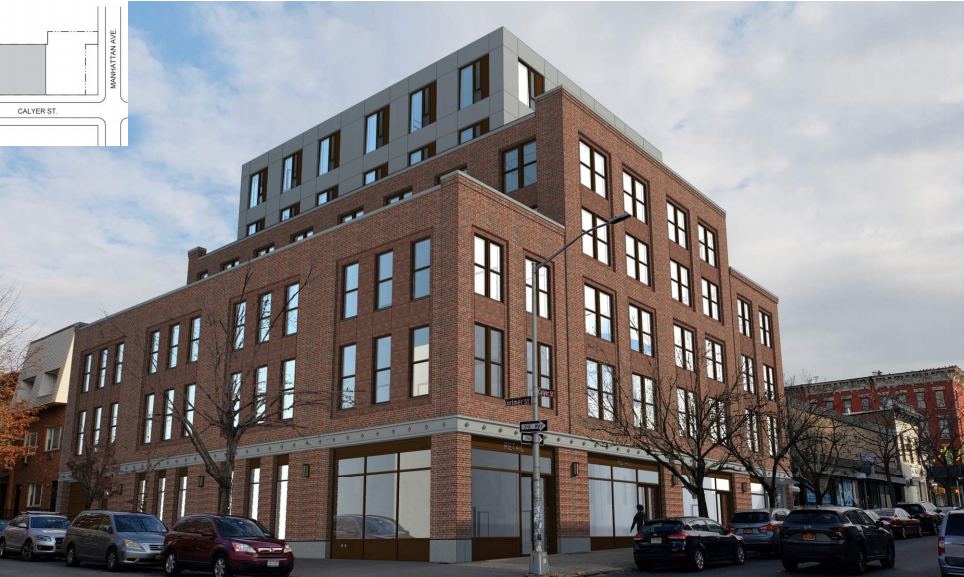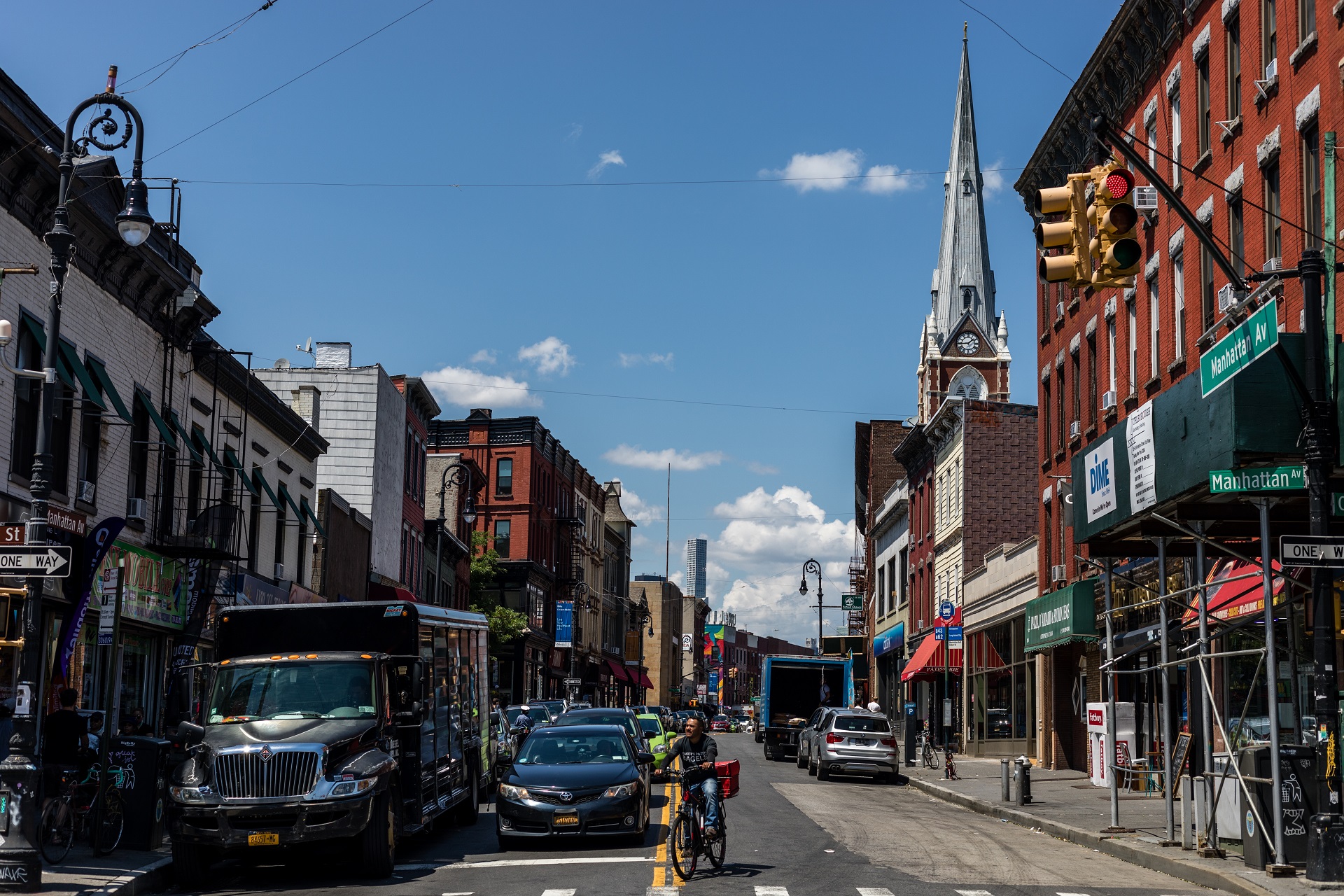That metal facade’s got to go, Greenpoint neighbors tell the Landmarks Preservation Commission

The Landmarks Preservation Commission rejected this design for 171 Calyer St. Rendering by PKSB Architects via the Landmarks Preservation Commission
City Landmarks Preservation Commissioners rejected a design for the largest new-construction project ever proposed in the Greenpoint Historic District.
At a Tuesday hearing, they told architect Sherida Paulsen the proposed seven-story, 33-unit apartment building with ground floor shops at 171 Calyer St. was too tall and too massive for the landmarked neighborhood — and the metal facade on the building’s top two floors was all wrong.
They instructed her to devise a new design and come back to the commission with it.
